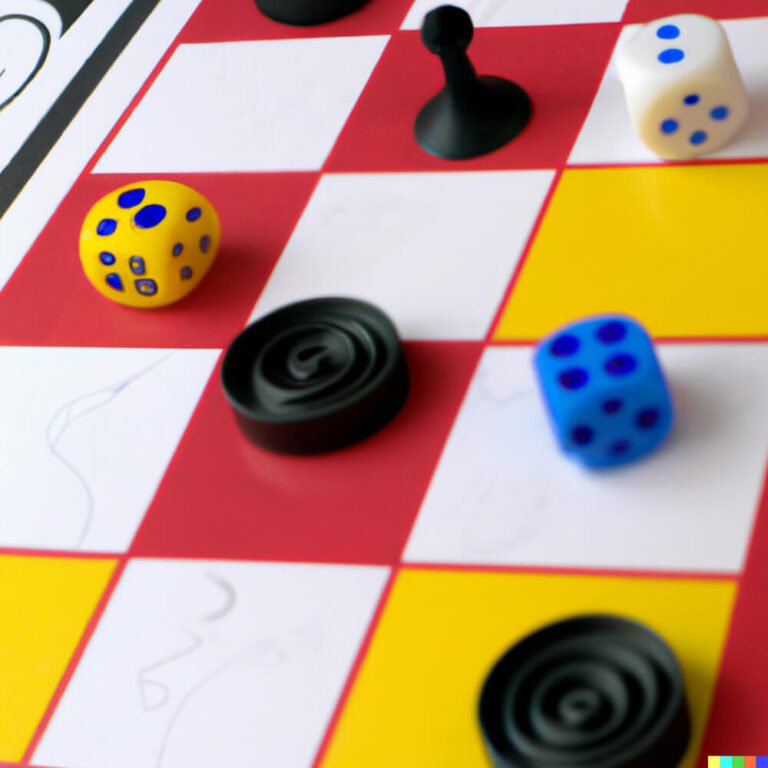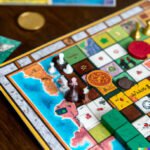The classic Chinese Mahjong board game has long been a symbol of traditional gaming and cultural significance. With its origins deeply rooted in Chinese history, the game has continued to evolve and captivate players around the world.
In this article, we will delve into the rich origins and history of Mahjong, exploring its cultural impact, variations, and even its portrayal in pop culture. Whether you’re a seasoned player or new to the game, join us as we take a deep dive into the fascinating world of Mahjong.
Dating back to the Qing dynasty in China, Mahjong has a storied past that reflects both its entertainment value and cultural symbolism. Understanding the roots of this beloved game is essential in appreciating its enduring popularity and legacy. From its humble beginnings to becoming a global phenomenon, Mahjong has stood the test of time as one of the most iconic board games in history.
As we embark on this journey through the world of Mahjong, we will explore not only the historical aspects but also examine its role in shaping Chinese society. Additionally, we’ll look at how Mahjong has made an impact on popular culture and discuss its digital adaptation’s rise to popularity in online gaming.
So whether you’re intrigued by its rich history or seeking to enhance your gameplay skills, there’s something for everyone to discover in this exploration of Classic Chinese Mahjong.
The Basics of Mahjong
Mahjong is a game that originated in China during the Qing dynasty, and it has gained popularity worldwide due to its rich history and engaging gameplay. In this section, we will take an in-depth look at the basics of Mahjong, including its rules, tiles, and gameplay.
Rules of Mahjong
The game of Mahjong is typically played by four players and consists of a set of 144 tiles. The goal is to form a complete hand using a combination of tiles such as suits, honors, and bonus tiles. Players take turns drawing and discarding tiles in an attempt to create a winning hand based on specific patterns and combinations.
Types of Tiles
Mahjong tiles are divided into different categories, including suits (such as Bamboo, Characters, and Circles), honors (Winds and Dragons), and bonus tiles (Flowers and Seasons). Each tile holds significance in the game and requires strategic thinking when deciding which ones to discard or keep.
Gameplay
The gameplay of Mahjong involves a mix of skill, strategy, and luck. Players must carefully plan their moves while also paying attention to the choices made by their opponents. Understanding the value and potential combinations of different tiles is crucial for success in Mahjong.
By understanding the rules, types of tiles, and gameplay mechanics of Mahjong, players can fully immerse themselves in this traditional Chinese game while honing their strategic thinking skills. Whether played casually with friends or competitively in tournaments, Mahjong continues to captivate enthusiasts around the world with its timeless appeal.
Strategy Tips and Tricks
Whether you’re new to the game or a seasoned player, mastering the art of playing Mahjong requires strategic thinking and careful planning. Here are some tips and tricks to help you develop winning strategies:
1. Understand the tiles: Familiarize yourself with the different types of tiles in Mahjong, including suits, honors, and bonus tiles. Knowing how to recognize and efficiently use these tiles can give you an advantage during gameplay.
2. Focus on your hand: Pay attention to the combination of tiles in your hand and think about which sets you want to prioritize. Whether it’s Pongs, Kongs, or Chows, having a clear strategy for your own hand can increase your chances of winning.
3. Keep track of discarded tiles: Throughout the game, observe which tiles are being discarded by other players. This can give you valuable information about which tiles are available and which ones you should avoid discarding yourself.
By following these tips and tricks, you can improve your skills in playing Mahjong and increase your chances of achieving victory in this classic Chinese board game. Whether you’re playing casually with friends or competing in a professional setting, strategic mastery is key to success in Mahjong.
Mahjong Variations
Regional Variations
One of the most fascinating aspects of Mahjong is the wide range of regional variations that exist. In China alone, there are numerous different styles of play, each with its own unique rules and gameplay.
For example, in Guangdong province, players use a set of rules known as Cantonese Mahjong, while in Shanghai, a variation called Shanghainese Mahjong is popular. These regional variations add an exciting element to the game, as players can experience different strategies and nuances depending on where they are playing.
American Mahjong
Outside of China, various countries have adapted the game to fit their own cultural preferences and gaming styles. One notable example is American Mahjong, which has developed its own set of rules and traditions since it was first introduced to the United States in the 1920s. The American version typically involves special “joker” tiles, unique scoring systems, and specific hands that are not found in traditional Chinese or other regional styles of play.
Mahjong Solitaire
In addition to the traditional multiplayer game, there are also single-player variations of Mahjong that have gained popularity in recent years. One such variation is Mahjong Solitaire, which is often played on digital platforms.
In this version, players must clear a board by matching identical tiles within a set time limit. While it shares the same tile-matching concept as classic Mahjong, Mahjong Solitaire offers a solo gaming experience that appeals to those looking for a more relaxed and individualized gameplay.
These diverse styles and variations demonstrate the adaptability and enduring appeal of classic Chinese Mahjong throughout different cultures and gaming communities around the world. Whether played in its traditional form or in one of its many adaptations, Mahjong continues to be a beloved pastime for players of all ages.
The Cultural Significance of Mahjong
The game of Mahjong holds significant cultural importance in Chinese society, dating back to its origins in the Qing dynasty. Mahjong is not only a form of entertainment but also serves as a social activity that brings family and friends together. The game’s rich symbolism and cultural significance make it an integral part of Chinese tradition and values.
In Chinese culture, Mahjong is often played during festive occasions such as Lunar New Year, family gatherings, and other special events. It symbolizes unity, harmony, and the coming together of loved ones. The act of playing Mahjong fosters a sense of community and connection, reinforcing the importance of interpersonal relationships in Chinese society.
Furthermore, Mahjong is deeply ingrained in traditional Chinese values such as filial piety and respect for elders. The game provides an opportunity for younger generations to spend quality time with their elders while engaging in an activity that is rooted in cultural heritage. This aspect of Mahjong reflects the core principles of Confucianism, emphasizing the importance of familial bonds and generational reverence.
Finally, on a broader scale, Mahjong has become emblematic of Chinese identity and tradition. It represents resilience, adaptability, and the preservation of cultural heritage across generations. As such, it continues to hold tremendous cultural significance in both China and among diaspora communities around the world.
| Cultural Importance | Symbolism |
|---|---|
| Brings family and friends together | Unity and harmony |
| Reinforces traditional values | Filial piety and respect for elders |
| Emblematic of Chinese identity | Resilience and preservation of heritage |
Mahjong in Pop Culture
Mahjong has made its mark not only as a traditional Chinese board game but also in popular culture, appearing in various forms of media such as movies, TV shows, and literature. Its portrayal in these mediums often adds depth to the story or serves as a symbol of tradition and cultural significance.
In movies, Mahjong has been featured in iconic films such as “Crazy Rich Asians” and “The Joy Luck Club,” where it is used as a backdrop for pivotal scenes and to illustrate the dynamics of family and relationships. The symbolism of the game is often used to reflect themes of strategy, deception, and hidden meanings within the narrative.
Similarly, Mahjong has been prominently featured in TV shows like “Fresh Off the Boat” and “Mad Men,” where it becomes a means of cultural representation and storytelling. In literature, authors have also utilized Mahjong as a motif or central element in their work, showcasing its ability to evoke nostalgia or serve as a reflection of Chinese heritage.
Moreover, the portrayal of Mahjong in pop culture has contributed to its continued popularity and recognition beyond traditional gameplay. Its presence in mainstream media has further cemented its status as an enduring symbol of Chinese culture and tradition, making it an integral part of the cultural landscape both within China and internationally.
– Examples:
– “Crazy Rich Asians”
– “The Joy Luck Club”
– “Fresh Off the Boat”
– “Mad Men”
Mahjong Online
Mahjong has been a beloved classic Chinese board game for centuries, and its popularity has only grown with the digital age. The transition of Mahjong into the online gaming world has allowed players from all over the globe to enjoy this traditional game in virtual form. Online Mahjong platforms have not only made the game more accessible but have also led to a surge in its popularity among people of different ages and backgrounds.
One of the key factors contributing to the success of Mahjong in online gaming is the flexibility it offers to players. With various websites and applications dedicated to Mahjong, individuals can choose from different styles, variations, and difficulty levels to suit their preferences. Whether a player wants to engage in a quick solo game or participate in multiplayer competitions, online Mahjong platforms cater to diverse gaming experiences.
The convenience of playing Mahjong online has further contributed to its widespread appeal. Players no longer need access to physical tiles or a designated playing space, as they can enjoy the game on their computers, tablets, or smartphones at any time.
The digitization of Mahjong has also facilitated connectivity among enthusiasts, fostering an international community of players who can interact, compete, and learn from each other’s strategies. As a result, online Mahjong continues to thrive as a popular choice for those looking for engaging and culturally rich gaming experiences.
| Aspect | Details |
|---|---|
| Player Flexibility | Various styles, variations, and difficulty levels |
| Convenience | Accessible on computers, tablets, or smartphones |
| Global Community | Fosters international connectivity among players |
Mahjong and Mental Health
In conclusion, Mahjong proves to be not only a culturally significant and entertaining board game but also a beneficial activity for mental health. The cognitive benefits of playing Mahjong include improved memory, concentration, and strategic thinking. The game’s therapeutic aspects provide relaxation and stress relief, making it an ideal pastime for individuals looking to unwind and engage in a mentally stimulating activity.
Furthermore, the social aspect of Mahjong should not be overlooked, as it often brings people together for friendly competition and camaraderie. Whether played in person or online, Mahjong can serve as a means of social interaction and connection, which is important for overall mental well-being.
Overall, the classic Chinese Mahjong board game offers a blend of cultural heritage, cognitive stimulation, and therapeutic value. Its enduring popularity both in traditional settings and online platforms is a testament to its appeal and versatility in providing enjoyable experiences while contributing to mental wellness. As such, Mahjong continues to be cherished by enthusiasts worldwide for its multifaceted benefits beyond mere entertainment.
Frequently Asked Questions
What Is the Chinese Version of the Game Mahjong?
The Chinese version of the game Mahjong is known as “Mahjong” or “Májiàng” in Mandarin. This traditional Chinese game has been played for centuries and has different regional variations within China.
Is There a Difference Between American Mahjong and Chinese Mahjong?
Yes, there is a difference between American Mahjong and Chinese Mahjong. American Mahjong is a variation that developed in the 20th century with its own set of rules, scoring system, and unique tiles. Chinese Mahjong, on the other hand, follows the traditional rules and uses its own set of tiles.
Can You Play Chinese Mahjong With American Tiles?
It is possible to play Chinese Mahjong with American tiles, but it may require some adaptation of the rules and scoring system. While the tiles themselves may be interchangeable to some extent, players should be aware that certain iconic symbols and numerical values are specific to either Chinese or American Mahjong sets.

I love playing all kinds of games – from classics like Monopoly to modern favourites like Ticket to Ride.
I created this blog as a way to share my love of board games with others, and provide information on the latest releases and news in the industry.





